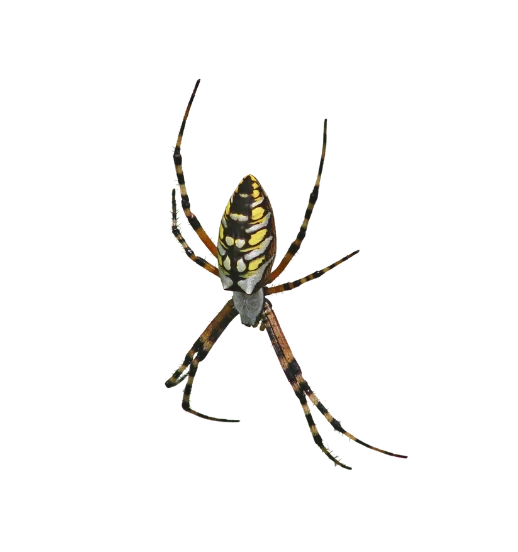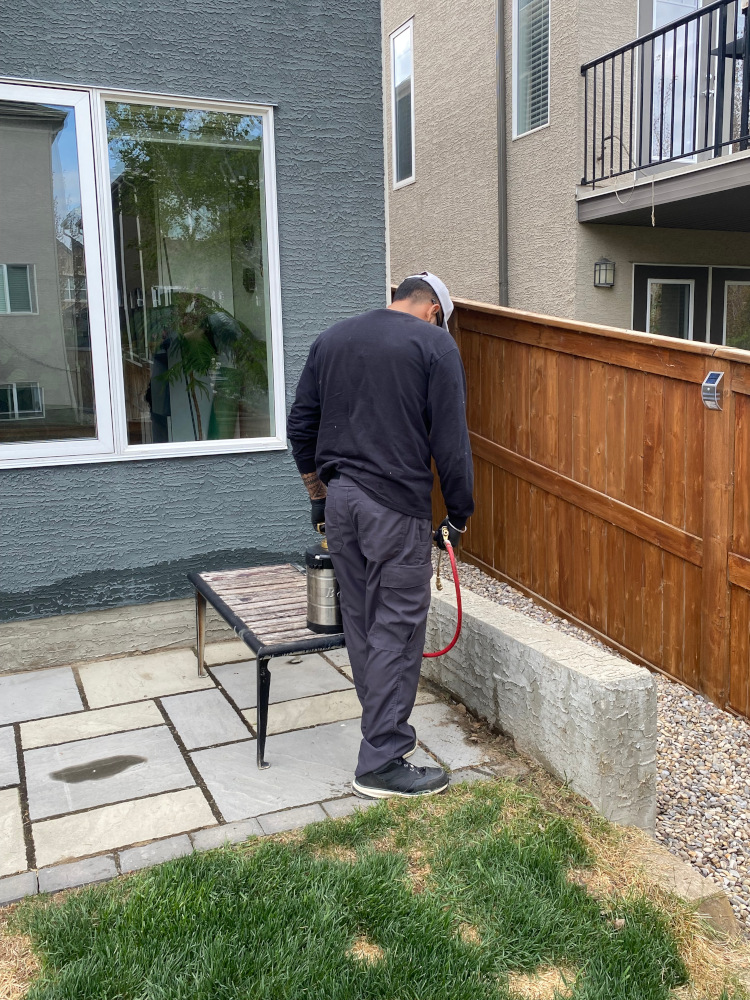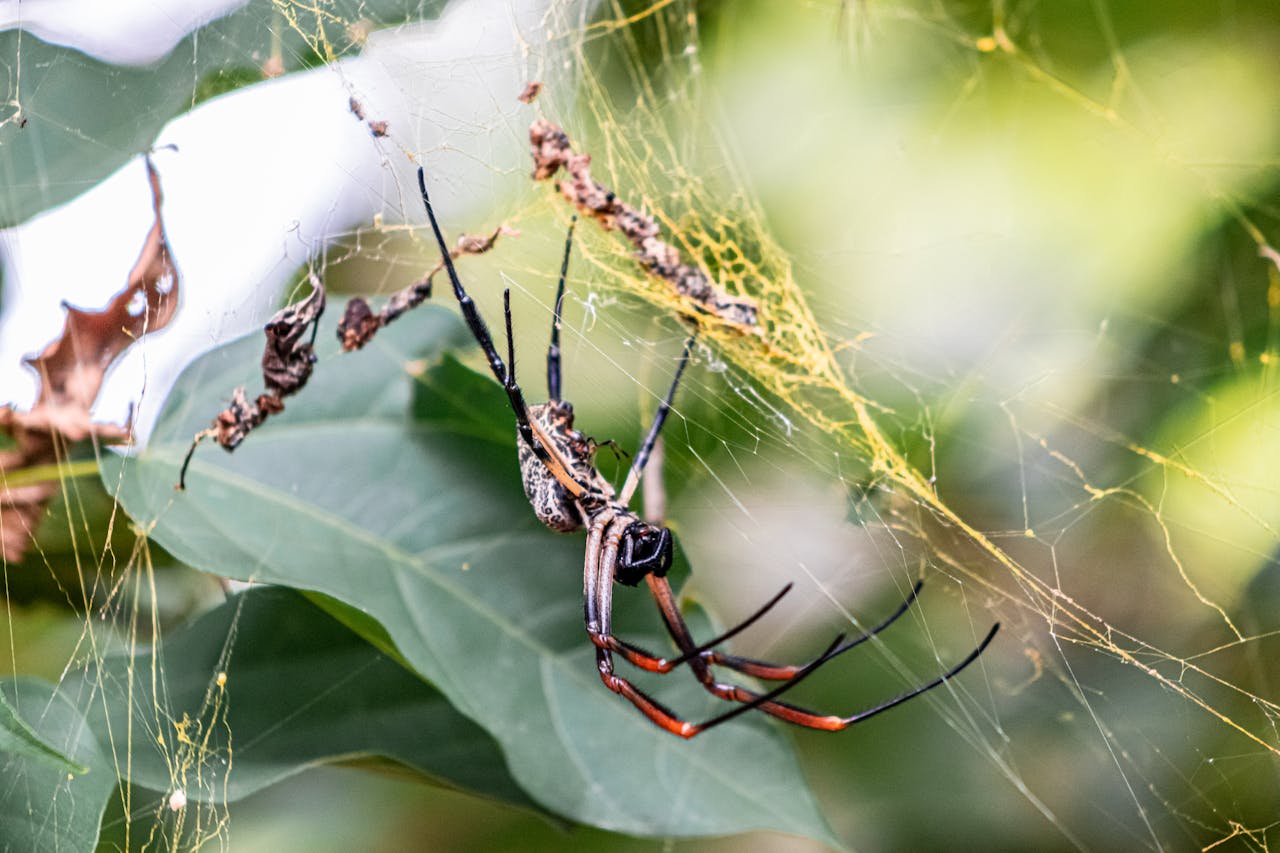Garden Spider
Garden spiders are harmless, beneficial arachnids known for their striking appearance and large, intricate webs that help control insect populations.

Garden spiders are harmless, beneficial arachnids known for their striking appearance and large, intricate webs that help control insect populations.

Safe for the whole family
Over 10,000 pest-free homes
Year-round protection and availability
Garden spiders are about 0.75–1 inch (19–25 mm) in body length, with a black and yellow patterned abdomen, long black legs with yellow or orange bands, and a distinctive round body.

Garden spiders, also known as orb-weaving spiders, are known for their beautiful, symmetrical webs, which can span over two feet in diameter. These spiders are not aggressive and prefer to stay in their webs, waiting to catch flying insects. They are often found in gardens, fields, and wooded areas, where they play an essential role in controlling pest populations.
One of their most distinctive behaviors is the creation of a zigzag-shaped silk pattern, called a stabilimentum, in the center of their web. While the exact purpose of this feature is debated, it may help attract prey or serve as a warning to birds to avoid flying into the web.
Despite their intimidating appearance, garden spiders are not dangerous to humans. They rarely bite, and when they do, the effects are mild—similar to a bee sting. They do not invade homes and generally prefer outdoor environments where they can thrive undisturbed.
Because they are natural pest controllers, eliminating garden spiders is unnecessary. However, if their webs are built in high-traffic areas, gentle relocation is the best approach. If you are dealing with an overabundance of spiders around your home, Avayda Pest Control can provide expert advice and targeted treatments to manage spider populations while preserving the beneficial role of garden spiders in the ecosystem.
At Avayda, we know that you want a pest free home, regardless of the time of year. In order to do that, you need the right team and products to help remove invaders and keep them out for good. The problem is you’ve tried to solve it yourself, or you don’t have the time, and they keep coming back. Ultimately, you’re afraid they’ll never go away.
Everyone deserves a pest-free home. And we understand that your home has to be safe for you and your family. Free from any kind of insect, pest, or unwanted guest. We’ve helped create pest-free homes for 10,000+ customers, and we’re ready to help. We offer year-round pest services with safe products for the whole family and a guarantee that they’ll be out of your house for good.

Garden spiders are among the most recognizable and often misunderstood spiders found in North America. Known for their large size and intricate webs, these outdoor spiders play a beneficial role in natural pest control by feeding on flies, mosquitoes, and other insects. While they may look intimidating, garden spiders are not harmful to humans and rarely pose a threat to your home or garden.
In this guide, we’ll help you identify garden spiders, understand their behavior, and share practical tips to prevent them from getting too close to your living spaces.
“Garden spider” is a common name for several species, including the well-known Argiope aurantia, or black and yellow garden spider. These spiders are part of the orb-weaver family, named for the large, circular webs they build to catch prey.
Garden spiders are most active in late summer and early fall, when their webs become easier to spot in gardens and along fences.
They typically rebuild their webs daily, often in the same location, and remain near or at the center of the web throughout the day.

No, garden spiders are not dangerous to humans. While they can bite if provoked, their venom is not medically significant and their bites are typically mild — similar to a bee sting. These spiders are more likely to retreat than attack and are considered beneficial for managing insect populations.
Because they feed on pests like aphids, mosquitoes, and flies, garden spiders can actually help maintain the health of your garden ecosystem.
Garden spiders prefer sunny areas with light vegetation where they can anchor their large webs. Common web locations include:
Because garden spiders are not indoor pests and contribute to outdoor pest control, full extermination is rarely necessary. However, if you’d like to keep them from nesting too close to your home or high-traffic areas, here are a few prevention tips:
Cut back plants, bushes, and tall grass near your home’s exterior. This reduces web-building opportunities and helps control insect activity that attracts spiders.
Outdoor lighting attracts flying insects, which in turn attract spiders. Use motion sensor lights or yellow “bug light” bulbs to minimize attraction.
If a garden spider sets up near a door, window, or patio, gently remove the web using a broom or hose. The spider will usually relocate to a less disturbed area.
While garden spiders prefer to stay outside, sealing cracks, gaps, and screens around your windows and doors will prevent the occasional indoor visitor.
Reduce flying insect populations around your home by eliminating standing water, cleaning up pet food, and keeping trash bins sealed — this reduces the food supply for spiders.
While garden spiders are not typically a concern for pest control services, you may want to consult a professional if:
Professional pest control companies can help assess insect activity and offer exterior treatments to manage both pests and the spiders that feed on them.
Garden spiders may look intimidating, but they’re a helpful part of your outdoor environment. With their intricate webs and natural insect control abilities, they play a valuable role in maintaining a balanced ecosystem. Still, if their presence becomes too intrusive, simple habitat modifications and pest control strategies can help keep them at a comfortable distance.
Avayda Pest Control offers expert advice and safe treatment options for all kinds of spiders and pests. If you’re dealing with unwanted spider activity around your home or garden, contact us today for a customized solution.